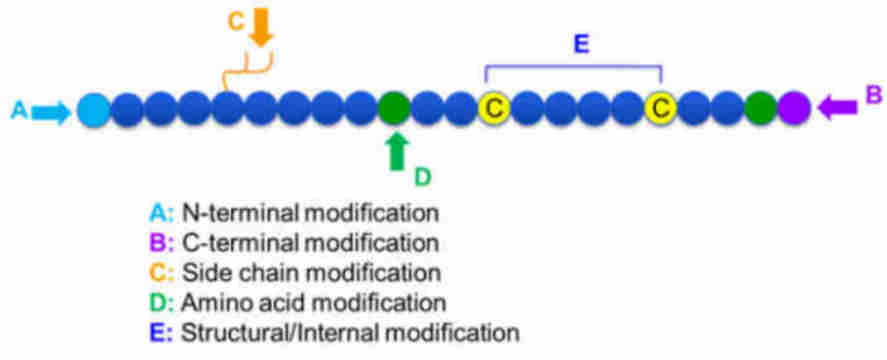There are many kinds of peptide modifications, which can be simply divided into post modification and process modification(using derived amino acid modification), and can be divided into N-terminal modification, C-terminal modification,side chain modification, amino acid modification and skeleton modification according to different modification sites (Figure 1). As an important means to change the main chain structure or side chain groups of peptide chain, polypeptide modification can effectively change the physical and chemical properties of peptide compounds, increase water solubility, prolong the time of action in vivo, change their biological distribution, eliminate immunogenicity, reduce toxic and side effects, etc. The following are the main peptide modification strategies and characteristics:

(source of the picture:Bachem)
-- 1.Cyclization
-- 2.N-methylation
-- 3.Phosphorylation
-- 4.Acylation
-- 5.Glycosylation
-- 6.Prenylation
-- 7.PEGylation
-- 8.Biotinylation
-- 9.Fluorescence labeling
-- 10.MAP (multiple antigen peptides)
......

 Sweep WeChat yards pay attention to us
Sweep WeChat yards pay attention to us
